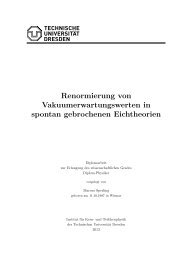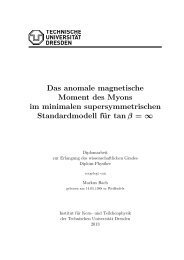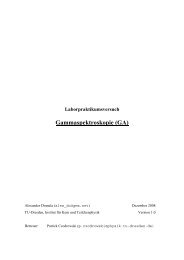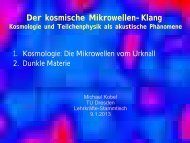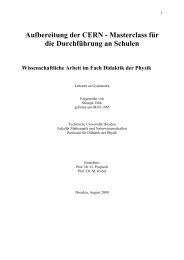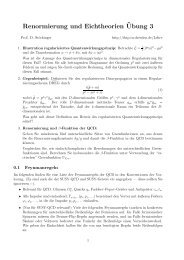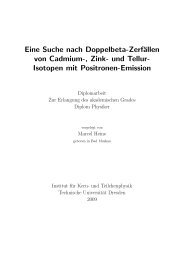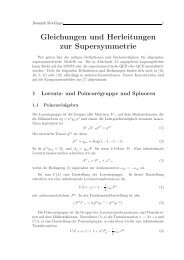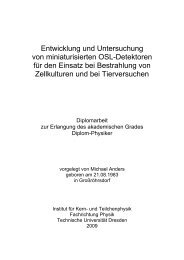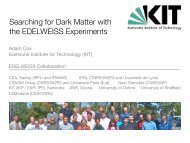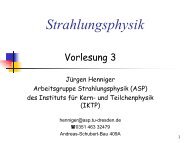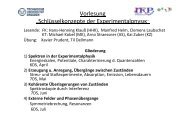a design study for a cobra upgrade to - Institut für Kern- und ...
a design study for a cobra upgrade to - Institut für Kern- und ...
a design study for a cobra upgrade to - Institut für Kern- und ...
Create successful ePaper yourself
Turn your PDF publications into a flip-book with our unique Google optimized e-Paper software.
64 5 Scintilla<strong>to</strong>r <strong>upgrade</strong><br />
lecting efficiency and the variation of the production of pho<strong>to</strong> electrons<br />
in the readout device. It can be enhanced by nonisotropic emission centre<br />
densities, which depend on the crystal quality.<br />
The multiplication process of pho<strong>to</strong> electrons within the readout device<br />
contributes <strong>to</strong> the final energy resolution, but it was not considered<br />
here. PMTs usually have smaller variations in the multiplication process<br />
than APDs. For all APDs and especially PIN diodes electric noise<br />
can deteriorate the reachable energy resolution. This must be taken<br />
in<strong>to</strong> account <strong>for</strong> further considerations, but was not possible <strong>to</strong> <strong>study</strong><br />
during this thesis.<br />
Also, position dependent collection efficiencies were not considered in<br />
this simulation, as the particle source was a beam, hitting always the<br />
crystal centre. The linearity of the pho<strong>to</strong> electron yield in dependence<br />
of the pho<strong>to</strong>n source position should be investigated further. There<strong>for</strong>e<br />
the influence of different readout dimensions, crystal wrapping and the<br />
use of light guides can be studied in order <strong>to</strong> obtain a detec<strong>to</strong>r assembly<br />
with high light yield and good linearity.<br />
Al<strong>to</strong>gether, this comparison between the different readout devices cannot<br />
predict the energy resolution of the final scintillation detec<strong>to</strong>r, but<br />
can provide an in<strong>for</strong>mative basis <strong>to</strong> <strong>und</strong>erstand the processes leading<br />
<strong>to</strong> the variation of the pho<strong>to</strong> electron production. Although the APD<br />
and PMT are expected <strong>to</strong> provide superior resolution in comparison<br />
with single Si-PMTs, which have a higher pho<strong>to</strong> electron yield variation,<br />
due <strong>to</strong> their small size. For a final decision measurements are<br />
nevertheless necessary. Besides the PMTs, which are <strong>to</strong>o big and contain<br />
<strong>to</strong>o many radioactive iso<strong>to</strong>pes <strong>to</strong> be used at the experiment, APDs<br />
are the favoured option, provided the strong temperature dependence<br />
of the gain can be handled.<br />
It must be considered, that simulations of optical pho<strong>to</strong>ns can enhance<br />
the simulation time significantly, because the path of several 10000 optical<br />
pho<strong>to</strong>ns per MeV must be simulated.



